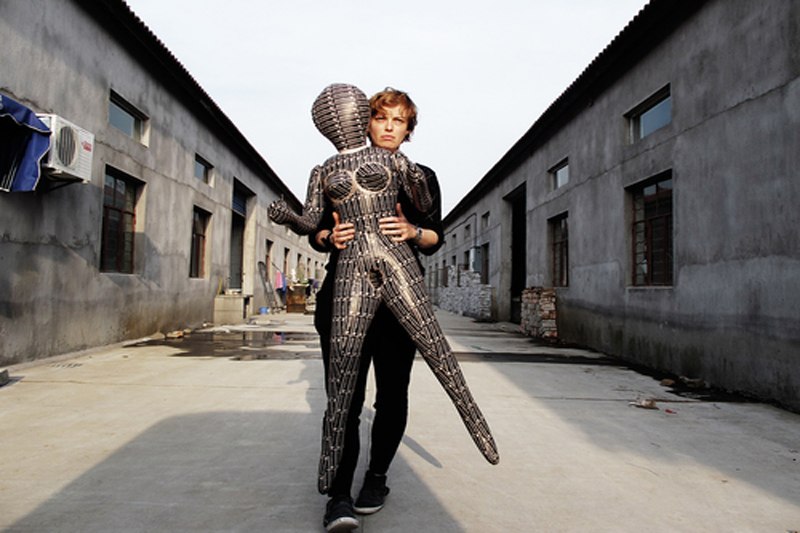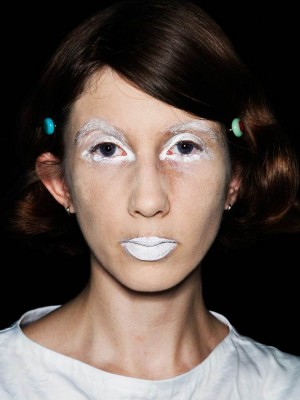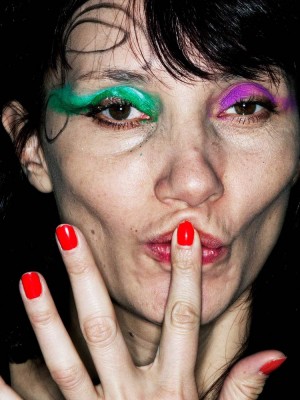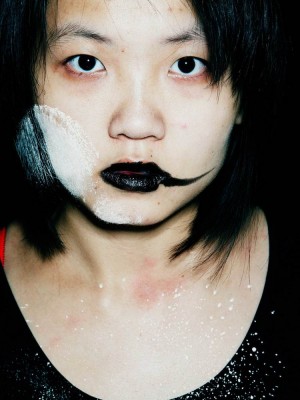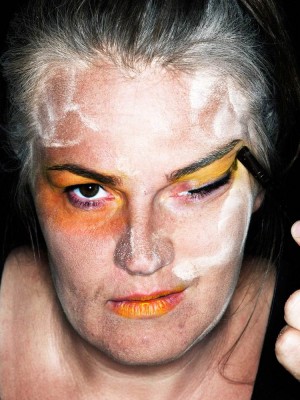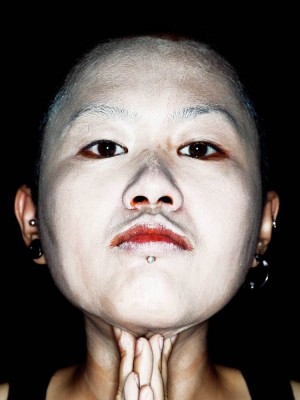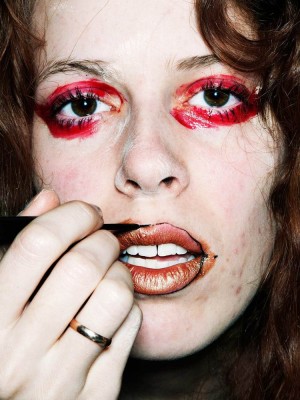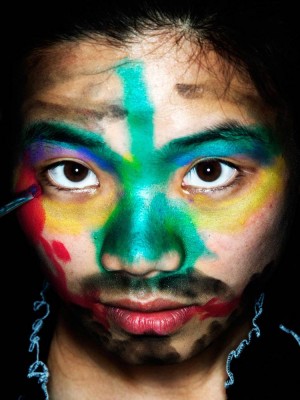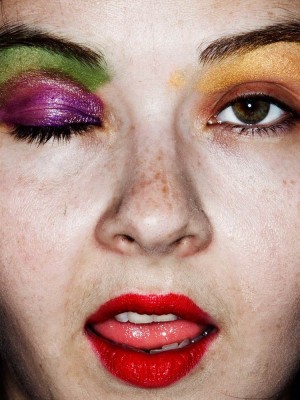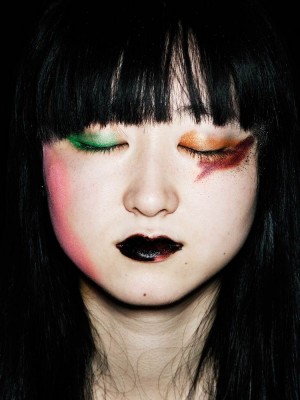Interviewed by Julie Anderson
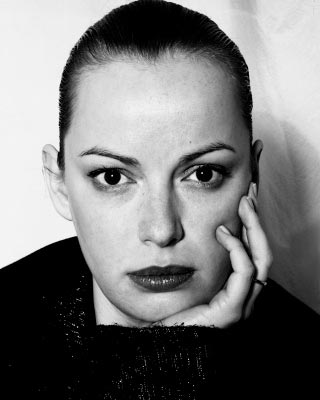 Susanne Junker is a photographer and former top model who knows what it’s like to be judged on appearance. I had the opportunity to interview her about her ongoing ID-identity project—a work in progress spanning the globe— in Asia, Europe and America. The project consists of portraits of “volunteer” women, exposing how we see ourselves without a mirror. The portraits are both shocking and beautiful.
Susanne Junker is a photographer and former top model who knows what it’s like to be judged on appearance. I had the opportunity to interview her about her ongoing ID-identity project—a work in progress spanning the globe— in Asia, Europe and America. The project consists of portraits of “volunteer” women, exposing how we see ourselves without a mirror. The portraits are both shocking and beautiful.
For most of us our self-identity or self-concept is directly related to our outward appearance—an awareness of one’s physical attributes and permanent self-assessments. We carefully pick out our clothing, apply makeup and style our hair just so, all the while in front of a mirror. Then we have the confidence to step out into the world.
Perception is everything. How we look on the outside contributes to how we feel and how we are viewed by society, as a whole. In her ID-identity project, photographer Susanne Junker intends to turn perception inside out.
Q: You were a highly sought after fashion model. I read somewhere that you felt used and abused. Can you elaborate?
A: This is exaggerated and not true. I did feel pressure by the competition and the uncertainty financially when jobs were slow, as was the case with many others. I had good times and bad times during my more than 10 year modeling career. Modeling gave me the opportunity to travel the world and to create and show my artwork internationally. On set, I realized that I became an object for commercial reasons or the desires of others. This experience, over many years, pushed me forward to create my first self-portraits, which fueled my rehabilitation.
I witnessed models pimped into prostitution by their agents and heard ugly stories of rape in night club toilets. There were also the cases of anorexia—down to the bones of once beautiful young, healthy women. To go further back into my childhood, my Catholic upbringing fostered an attitude of submission. Take all of that into account and there you have “figures for the base of a crucifixion”, one of my photo series of stereotype females in repressed positions.
Q: The first series of self portraits that you produced entitled “Supermodel?” exposed your life behind the scenes, if you will. What was the driving force behind those images? How did the industry respond?
A: The question is more like: how did I respond to the industry? I exposed myself from an early age and became a canvas while still a teenager. “Supermodels?” helped me to get to know myself and to grow my confidence. I realized that I can be unique and not just a number in a modeling agency. It was also about the photo composition, light, and accessories. That excited me and developed naturally. I took pleasure in being my own boss. I realized years later how sad I appeared on almost each and every “Supermodels?” image. Maybe it was the counterpart to the happy cover smile? At the same time, I photographed every model friend under the sun. We did it our way and that was fun and liberating for us.
Q: For many years you explored the topics of femininity, beauty, sex and emotion via self portraits. Your ID-identity project is different. Now your lens is capturing women from all over the world … Why did you decide to photograph others for this particular project?
A: When I had the idea to “make up” in front of a camera without a mirror, I tried it—on myself first. But it didn’t work. I know myself too well in front of a lens. ID-Identity works mainly with the spontaneous moment of unconsciousness. Doing it myself felt like cheating. And after so many years working in solitude, I was ready to be surrounded by other women. I had the enjoyment of discovering them. It may be only a little at each photo shoot but the miscellaneous energy of every individual is amazing to experience.
Q: ID-identity project explores society’s standards of beauty. Manufactured beauty is what we see all around us. It seems to me that ID-identity is almost a battle cry for women of all ages to revolt against these crazy, fashionable ideals … Is that your intention?
A: I don’t want to battle or revolt. I want to ask questions. ID-Identity is a proposition of my thoughts and ideas, considering beauty and the liberty of uniqueness. Stand up for who you are! Doesn’t it feel “fresh” to look at real people with real wrinkles next to those “Photoshopped beyond recognition” actresses? Hey, it’s not their fault, but whose is it? … That is the bigger question to explore.
Q: What is your idea of true beauty?
A: Confidence. Confidence makes every woman shine.
Q: During your travels, what society or group of people did you meet that you feel have a “healthy” relationship with their bodies, faces and aging?
A: The participants of ID-Identity are incredibly strong. They are willing to show such intimacy and overcome what society calls ugliness. The oldest participant was way over 80 years old and blushed like a teenager during the photo session. It was so beautiful!
Q: Taking away the mirror from your subjects, you have produced some very arresting imagery that has been untouched by Photoshop. I find that I can not look away. How do your subjects feel when they see the final images?
A: There are two moments for each participant “facing” what happened during the ID-Identity photo session:
The first instant is the anticipated moment when they look into the mirror right after the shoot, and they see the result of their action. This releases all sorts of feelings: disbelief, laughter, tears. It is as individual as every portrait is and the women are usually ready to experience that. Later, out of many photographs, I select “the one” that will be part of the final series. The print is 60 cm x 80 cm, which is many times larger than a human head. It depicts all details of skin, little hairs, blood vessels etc. – and the uncontrolled and individual make up.
When a participant sees this image hanging on a gallery wall it can be quite overwhelming. Mostly they are astonished by their own courage. For me, each attendee gives me the great gift of their strength to be part of this project and to let me record such an intimate moment. I consider it a self-portrait of each woman.
Q: I know you are not big on “titles,” I agree with that! Just so we are all clear, with the many different hats that you wear, how do you describe your current functioning state? An “artist extraordinaire” comes to mind, but I would love to hear your thoughts.
A: In front of camera, behind the camera—being invited to shows in galleries, to open my own art space in China and to curate exhibitions of other artists. It seems like I have to look behind the curtain to understand how it really works,/ the full scale …
I am a 41-year-old woman who has been on “the road” since the age of 16. Twenty-five years later, and I am lucky that I didn’t have to do the same activity during the entire period. However, in my case, I can see repetition that I would describe as “digging deeper”. I am autodidact and in order to understand details I must observe all possibilities. I’ve gone from subject to author several times and this continues to accompany me throughout my career. My art is about identity. I love people. Human beings interest me more than all things in life. To keep an open vision, it is only helpful to have constant exchange and involvement with other people. Whether this will show through common exhibitions or shows I organized for other artists, it doesn’t matter. I reject the art-worlds’ tendency to label.
Q: I love that you started and directed stageBACK, an artist space in Shanghai, China. Traditionally, in Chinese culture, women are not afforded very much respect. Doing business, creating, and living there, what are your thoughts on East vs. West and the great male / female divide?
A: When it comes to the place of women in society, China is an interesting mixture of realities. Yes, traditionally women had little status and virtually were without any opportunities in business or in any creative enterprise. This, however, has changed a great deal in the past 60 years. While communism wreaked havoc on society in the years after “liberation,” particularly during the great leap forward and the cultural revolution, one of Mao’s only real achievements in “social engineering” was the relative liberation of women. Women in China now do have real opportunities in most if not all walks of life. Don’t get me wrong, it isn’t Norway, but it is a far cry from the way things were in the past.
Q: Now you are in Paris, with an exhibition coming up in October. What are your plans for ID-Identity?
A: The current group exhibition titled: “mauvais genre”, displays self-portraits works of mine. Yet the curator is planning a special ID-Identity event with a photo shoot in the gallery during the exhibit. The goal of ID-Identity is to reach women worldwide and to create awareness about the meaning of beauty and individuality.
ID-Identity is still work in progress. Around 260 portraits have been realized in the past years. I desire to grow the number up to a thousand in the near future to create an ultimate archive of diverse women portraits. The concept of applying makeup without a mirror has worked in urban and remote areas similarly. I’d like to add more locations for the photo sessions: places in Africa and the United States for example. For instance: ID-Identity will be part of the “Month of Photography Denver” In March of next year, I’m showing at Red Line Denver, in a show titled “on beauty”!
The project needs support, not only by women participating but also by art and cultural institutions hosting the event and promoting ID-Identity to the press, editors, and publishers. A publication with accompanying exhibitions shall follow. I wish that through articles like this one, ID-Identity will reach many more women and hopefully give them the interest and occasion to be part of it.
My last question … WHEN WILL THE COFFEE TABLE BOOK BE OUT?
For more of Susanne’s amazing work check out her website. Her work is currently on display at the Galerie Laetitia Hecht & Addict Galerie in Paris. For those of us stateside the good news is that she will be a featured artist for “on beauty” during the biennial Month of Photography Denver coming this spring 2015.
